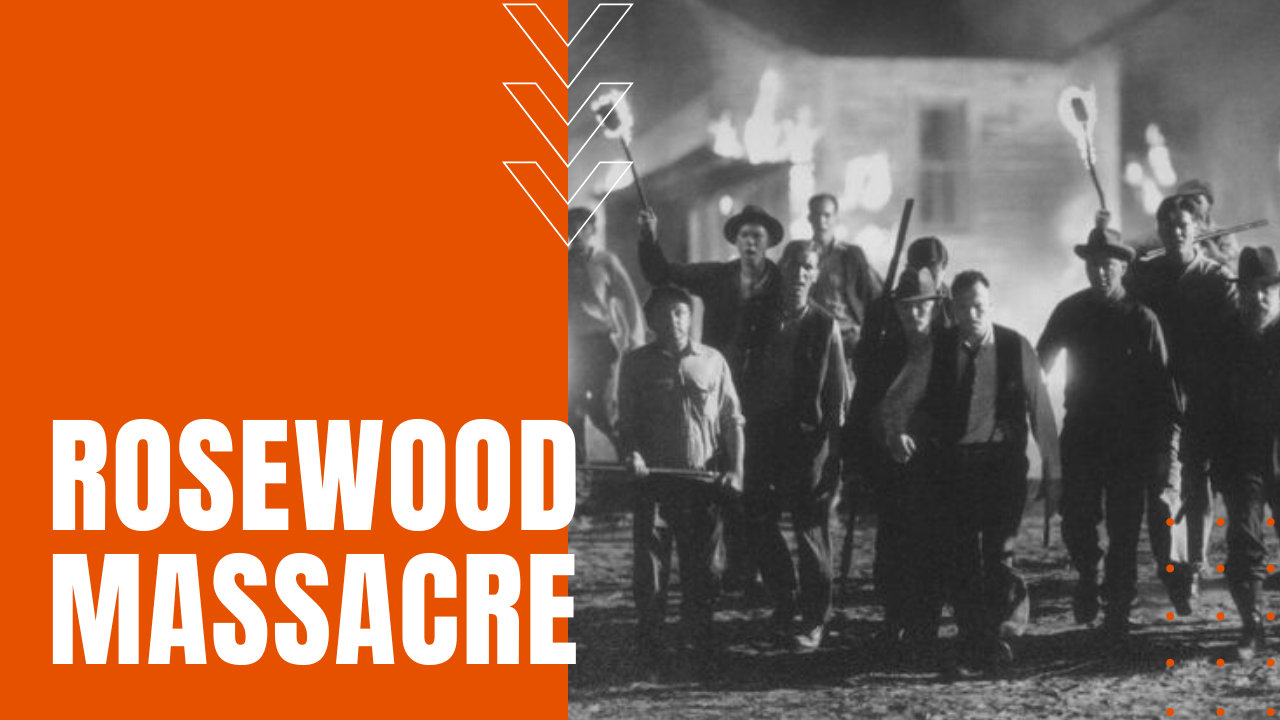Rosewood Massacre

Originally settled in 1845 by both Black and white Americans alike, African Americans in Rosewood Florida would suffer the same black codes and Jim Crow segregation laws as any other Post-Civil War Blacks in the Southern U.S. After most whites in Rosewood moved to nearby Sumner by the 1890s, on New Year’s Day, 1923, 22-year old Fannie Taylor claimed she was assaulted in her home by a Black man, and when Sheriff Robert Walker did little to find the perpetrator, Fannie’s outraged husband gathered a white mob to hunt down the suspect.
What Was the Rosewood Massacre?
In response, white haters from Gainesville—including about 500 Ku Klux Klan members—descended on Rosewood, where law enforcement told them that a Black prisoner named Jesse Hunter had escaped a chain gang, which set the mob in search of the missing prisoner. Convinced that Jesse Hunter was being hidden by Rosewood Blacks, they forced Aaron Carrier out of his house, dragged him to Sumner behind a car, where he was cut loose and beaten to only inches of his life.
When blacksmith Sam Carter confessed under duress that he had hidden the prisoner, the mob shot him and hung him from a tree when he failed to produce the convict. After Sarah Carrier hid some 25 frightened Black children in her house, she and her son were killed by white racists, which later set the mob to destroy Rosewood one home and business at a time. As the town burned to the ground, many surviving Blacks hid over the next few days in nearby swamps, until Sarah Carrier’s surviving son James led them to safety.
For his alleged interference in helping his frightened brethren, the last of the white mob forced the good samaritan to dig his own grave before they murdered him. After Florida Governor Cary Hardee offered to send in the National Guard to restore order, Sheriff Walker declined the help, and while the white haters began to disperse, a group returned on January 7th to burn what little remained of the town.
No Justice for Rosewood Massacre
A special prosecutor and grand jury were appointed by Hardee to investigate, but after some 30 (mostly white) witnesses had testified, the jury was released after the prosecutor failed to find enough evidence for criminal prosecution. The surviving African Americans of Rosewood never returned after the killing spree and destruction of their homes and businesses, making the Rosewood Massacre, yet another stain in the South’s long history of racial injustice.
